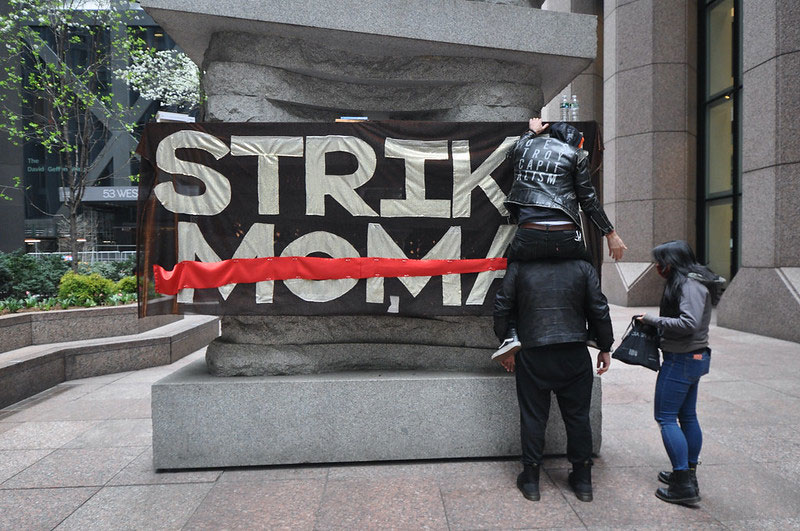
May 2, 2017, New York Times
Rosa Parks. Rosa Louise McCauley, born on February 4, 1913, in Tuskegee, Alabama, spent the first years of her life on a small farm with her mother, grandparents, and brother. On December 1, 1955, Ms. Parks was arrested for refusing to give up her seat on a bus in Montgomery, Alabama, when a white man demanded that she do so. Her brave and principled action launched the Montgomery Bus Boycott by 17,000 black citizens. A Supreme Court ruling and declining revenues forced the city to desegregate its buses thirteen months later.
For her example and continued resistance, the U.S. Congress called Ms. Parks “the first lady of civil rights” and “the mother of the freedom movement.” Three days after her death in October 2005, her body was viewed in the U.S. Capitol Rotunda, the first woman and the second black person given the honor of lying in state in the U.S. Capitol. On the first anniversary of her death, President George W. Bush signed HR 4145 to place a statue of Ms. Parks in the National Statuary Hall, saying, “By placing her statue in the heart of the nation’s Capitol, we commemorate her work for a more perfect union, and we commit ourselves to continue to struggle for justice for every American.”
In February 2013, that statue of Ms. Parks waiting to be arrested was unveiled in the U.S. Capitol, with President Obama saying these words: “This morning, we celebrate a seamstress, slight of stature but mighty in courage… In a single moment, with the simplest of gestures, she helped change America and change the world.”
The New York Times made the paper’s quotation for the day this statement by Daniel Geary, a professor of American history at Trinity College Dublin, about Ms. Parks’ former home being shipped to Berlin from Detroit for preservation.
People like to remember Rosa Parks for one moment, when she wouldn’t stand up on a bus. They don’t really want to grapple with the rest of her life. The death threats, the fact that she had to leave Alabama and go to Detroit.
The house, owned by her brother, was one of Ms. Parks’ first stops after fleeing the South and making Detroit her adopted home. When threatened with demolition, Ryan Mendoza, a Berlin-based American artist, moved the house to the garden of his home in a working-class Berlin neighborhood, where it was opened to the public in early April to front-page news.
Sign up for our free newsletters
Subscribe to NPQ's newsletters to have our top stories delivered directly to your inbox.
By signing up, you agree to our privacy policy and terms of use, and to receive messages from NPQ and our partners.
“With our history, we have so many years of guilt and a culture of practicing not forgetting,” said Deike Diening, a journalist for Berlin’s Tagesspiegel newspaper, who wrote about the project. “Now, it might be a healing process to be able to turn it around, to give refuge to others. It feels good.”
But some said it was the timing of the project that accounted for its extraordinary resonance. “I think Berliners, even more than Germans in general, are really deeply concerned about what is going on in the U.S., with Trump,” said Gero Schliess, culture correspondent at Deutsche Welle, Germany’s international broadcast service.
The United States has long been a model. But now, he said, “the political discourse in the U.S. is not really reflecting democratic values.”
Rhea McCauley, Ms. Parks’ niece, bought the family house from the government for $500 and then found Mr. Mendoza, who saved the small home from demolition by dismantling it, shipping it, and then rebuilding it by hand as an “act of love.” Here is one among several videos about the effort to preserve the house. When Ms. McCauley traveled to Berlin for the unveiling, she said, “I was amazed to find more knowledge of Auntie Rosa’s legacy there than here.”
Ms. McCauley was also pleased with Mr. Mendoza’s decision to leave the facade in the condition he found it. “This house has been through everything,” she said. “I’m glad it’s not painted nicely, with flowers and a picket fence. We’re not talking about a fairy tale, there’s no Hansel and Gretel here. We’re talking about a lady who sacrificed so much, who suffered.”
Today, as in the early days of the U.S. civil rights movement, there are many people taking immense risks to stand up—or, in the case of Rosa Parks, to remain sitting—for the sake of justice and equality. Almost all of these people, many of them dear NPQ readers, are courageously acting on principle in complete obscurity, and not a few of them are risking careers and personal security to do so. Even for Ms. Parks, though her actions resulted in monumental societal change and eventually in many honors, her life circumstances only hardened.
We see in this story what makes the front page in Berlin’s news. In the U.S. nonprofit sphere today, who are our heroes?—James Schaffer













